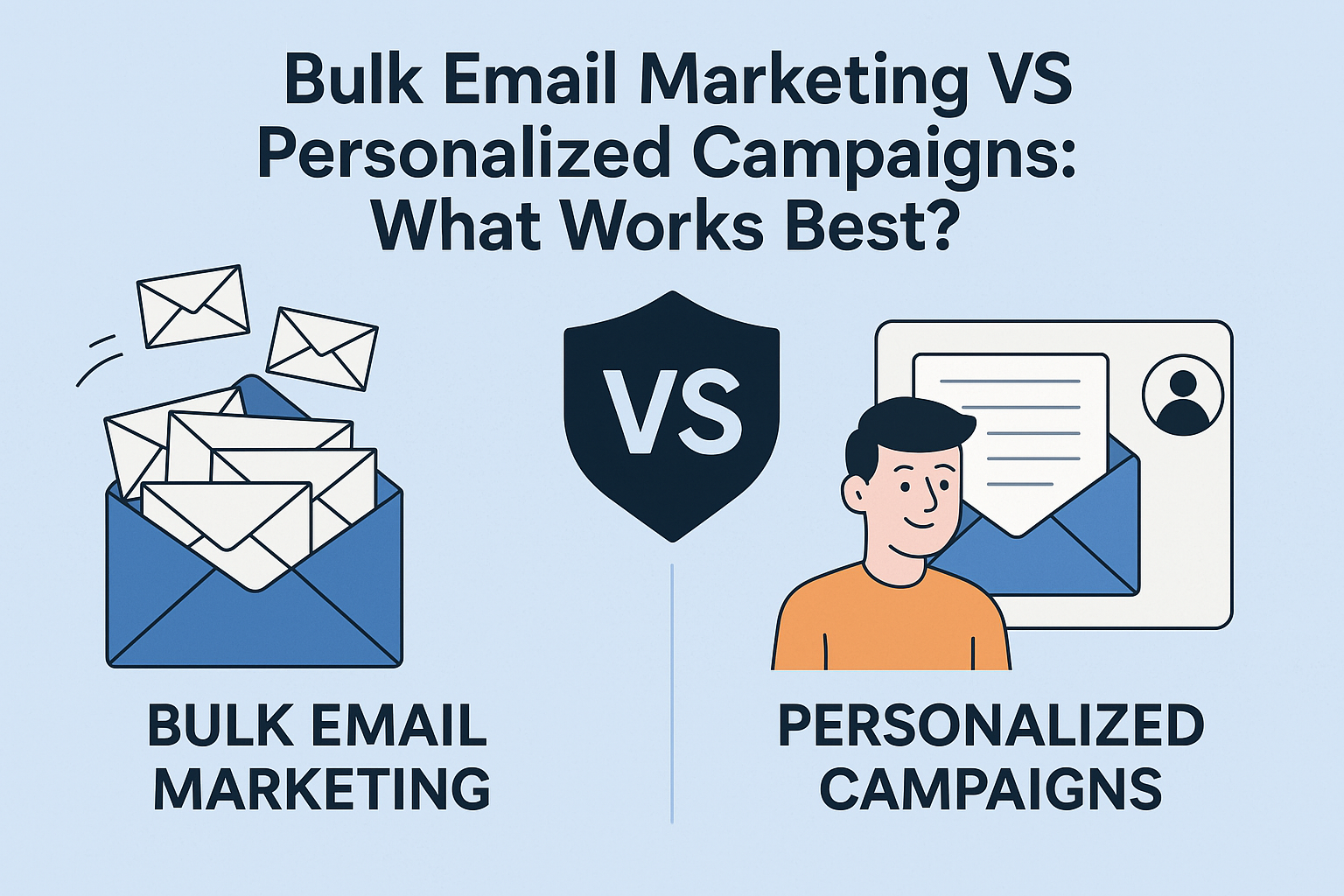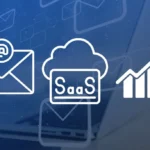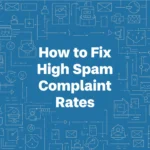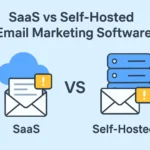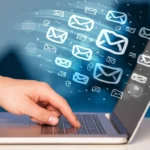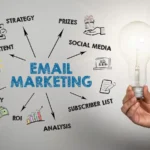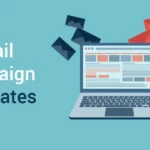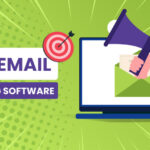Do not know well about email marketing? Worry not! This guide will help you learn all about email marketing. In email marketing, a single email is sent to thousands of recipients by clicking only the send button but it does not mean all your emails land in your recipients’ inboxes. To do so, you must need to learn about marketing campaigns like bulk email marketing and personalized email marketing campaigns.
In this blog, we have mentioned the key differences between bulk email marketing campaigns and personalized email campaigns, their pros and cons. Learning this will help you choose which approach works best for your goals and audience.
What is Bulk Email Marketing?
Sending the same message to a large group of recipients at the same time is called bulk email marketing is also known as mass email marketing. In other words, as an alternative to writing individual emails to each person, you send one email that goes out to many people. For example, a company newsletter or a holiday sale announcement sent to your whole subscriber list would be a bulk email campaign. Tools like Relayzo make it easy to design a single email and click “send” to hundreds or thousands of contacts.
What Are Personalized Email Campaigns?
In this email content is customized for a specific recipient based on their data and behaviors. Unlike generic mass emails, these campaigns aim to create a more relevant and engaging experience for each recipient by capitalizing on information like their purchase history, browsing behavior, and engagement metrics.
Pros and Cons of Bulk Email Marketing
Like any tool, bulk email marketing has advantages and disadvantages. Here are some key pros and cons:
Pros of Bulk Email Marketing:
- Wide Reach. You can instantly send the message to your entire list (thousands of people) in one go. This huge coverage is great for brand awareness or major announcements.
- Efficiency and Speed. Creating and sending one email is quick. With email marketing software (Mailchimp, Brevo, etc.), you can use templates and automation so that a newsletter or promo goes out in minutes.
- Easy Analytics. Bulk email campaigns usually come with built-in reports. You can easily see open rates, click-through rates, and bounces for the entire send. (These metrics are helpful for beginners to learn how their audience engages in general.)
Cons of Bulk Email Marketing:
- Low Personalization. Bulk emails marketing tend to be generic. You might personalize it with a name, but otherwise, everyone gets the same content. This “mass” approach doesn’t cater to individual interests, so it can feel impersonal.
- Risk of Spam Filters. Email providers may flag generic bulk sends as low relevance and filter them to spam folders. If many recipients ignore or delete the email, your reputation can suffer.
- Lower Engagement. Because content isn’t customized, bulk emails often get lower open and click rates. Readers may lose interest if your message doesn’t feel relevant. (Studies show personalized emails perform much better – see below.)
- Higher Unsubscribe/Bounce Rates. Sending irrelevant content to a wide audience can annoy some recipients, leading them to unsubscribe. Also, using purchased or stale lists in a bulk send can raise bounces and harm your sender reputation.
Pros and Cons of Personalized Email Campaigns
Personalized campaigns have the opposite profile: they offer high relevance but require more work. Here are some pros and cons:
Pros of Personalized Emails:
- Higher Engagement and Open Rates. Personalized emails grab attention. For example, industry data shows emails with personalized subject lines get over 20% higher open rates than generic ones. And they drive more clicks – one study found a 139% increase in click rate for personalized vs. one-size-fits-all emails. In practical terms, when readers see content relevant to them (like their name or product suggestions), they are much more likely to open and read it.
- Improved Customer Engagement and Loyalty. Personalization makes customers feel valued. A personalized message can strengthen your relationship with subscribers, leading to better loyalty and word-of-mouth. (Adobe’s guide notes that personalization “makes customers and subscribers feel valued and important”.) In fact, 94% of marketers say personalization boosts sales, and 80% of customers are more likely to buy from brands that deliver personalized experiences.
- Higher Conversions and ROI. Because the content matches the recipient’s interests, personalized emails tend to convert at higher rates. One statistic notes that companies see significantly more sales from personalized campaigns, often delivering a better ROI than generic blasts.
- Better Metrics and Segmentation. When you target specific segments (e.g. “New customers” vs. “VIP customers”), you can tailor offers precisely. This often yields stronger click-throughs and lower unsubscribe rates. (For example, segmented emails can get dozens of percent higher opens and clicks than non-segmented campaigns.)
Cons of Personalized Emails:
- More Time and Effort. Creating personalized content takes work. You need to collect data, set up segments or dynamic fields, and craft multiple variations. According to a study, it can take 20–30 minutes to personalize one email with the right details. For beginners, this setup can be a learning curve.
- Less Scalability. Because personalization takes extra steps, it can be slower to roll out to large lists. You may not reach as many people as quickly. For example, one person might manually customize only a dozen or so emails a day, whereas a bulk send can hit thousands instantly. (However, modern tools are closing this gap.)
- Risk of Getting It Wrong. If the data is inaccurate (e.g. wrong name or preferences), personalization can feel creepy or irrelevant. And if overdone, customers might feel companies know too much about them. So, personalization needs to be done carefully, with good data and privacy in mind.
- Complexity of Tools. Setting up advanced personalized workflows (like behavior-triggered emails) can be complex for a beginner. It often requires learning how to segment lists or use automation rules.
When to Use Bulk Email Marketing Campaigns
Using bulk email markketing campaigns is very helpful for reaching large audiences quickly with a consistent message and making them suitable for several marketing goals. This is also a very powerful and effective way to announce new products, run promotional events, share company news, and engage with customers. However, their productivity can hinge on proper implementation to avoid being perceived as spam. Bulk email campaigns make sense in these scenarios:
- Announcements and Newsletters. If you have general news or updates to share (monthly newsletters, company news, or website launch updates), a bulk send keeps everyone informed.
- Big Sales and Promotions. Holiday sales or clearance promotions often target everyone on your list. Sending one email to all subscribers about a Black Friday sale is typical “bulk” use.
- Top-of-Funnel Marketing. When prospects are just becoming aware of your brand, a mass email is an easy way to reach many leads at once and introduce your value.
- Simple Information Alerts. Reminders for events (like “Webinar tomorrow!”) or security notices (“Our office will be closed on the holiday”) can go to all contacts.
- Cleanups and Verifications. Sometimes companies send re-engagement or confirmation emails in bulk (e.g. “Still want to hear from us? Confirm your subscription”).
When to Use Personalized Email Campaigns
When aiming to increase engagement, boost conversion rates, and build stronger customer relationships the personalized email campaigns come in handy as they allow you to customize messages to individual preferences and behaviors. They are particularly effective for re-engagement, promotions, and improving overall customer experience. Personalized emails shine in situations where relevance is crucial:
- Welcomes and Onboarding. When someone first signs up or buys something, send a personalized welcome series (e.g. using their name and referencing their interests). This creates a great first impression.
- Birthday or Anniversary Emails. Sending a happy birthday wish with a special offer is a classic personalized campaign. It shows you remember the customer’s milestone.
- Product Recommendations and Upsells. Based on a customer’s past purchases or browsing, you can email them suggestions tailored to their taste (e.g. “People who bought X also liked Y”). This kind of targeted suggestion usually converts better than a generic catalog.
- Re-engagement Campaigns. If certain subscribers haven’t opened emails in a while, you might send them a customized note asking if they’d like to stay subscribed or offering an incentive.
- Targeted Promotions. Suppose you have a segment like “customers in City X” or “people who clicked on a sports product”. You can send each segment an offer that fits their profile (e.g. location-specific event invites or gear for sports fans).
- Thank-You or Loyalty Messages. Rewarding frequent buyers with a special coupon that includes their name (“Thanks [Name], here’s 20% off for being a loyal customer”) increases loyalty.
Conclusion
There’s no one-size-fits-all answer to “bulk vs personalized.” Both have their place in a healthy email marketing strategy. Bulk emails are quick and wide-reaching – perfect for general announcements or beginners just starting to build an email list. Personalized campaigns require more effort but tend to pay off with higher engagement, stronger customer connections, and better results.
For beginners, a smart approach is to start simple: send regular bulk newsletters or promotions using a tool like Relayzo. As you learn more about your audience and collect data, gradually add personalization (for example, segmenting your list by interest or adding the recipient’s name). Always keep an eye on your email open rates and customer engagement metrics. Over time, you’ll discover what your subscribers respond to best.
In the end, the best strategy depends on your goals. Want to shout a message to everyone quickly? Bulk email is your friend. Want to speak directly to each person’s needs and boost engagement? Go personalized. Often, the most effective campaigns use a mix: broad announcements combined with targeted, personal touches. With practice, you’ll find the right balance and see what truly works for your audience. Good luck, and happy emailing!
